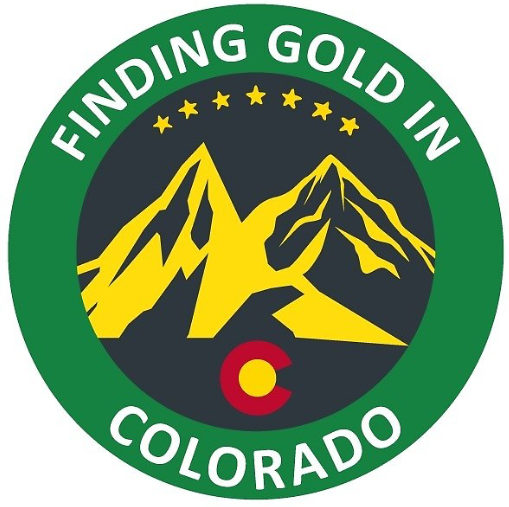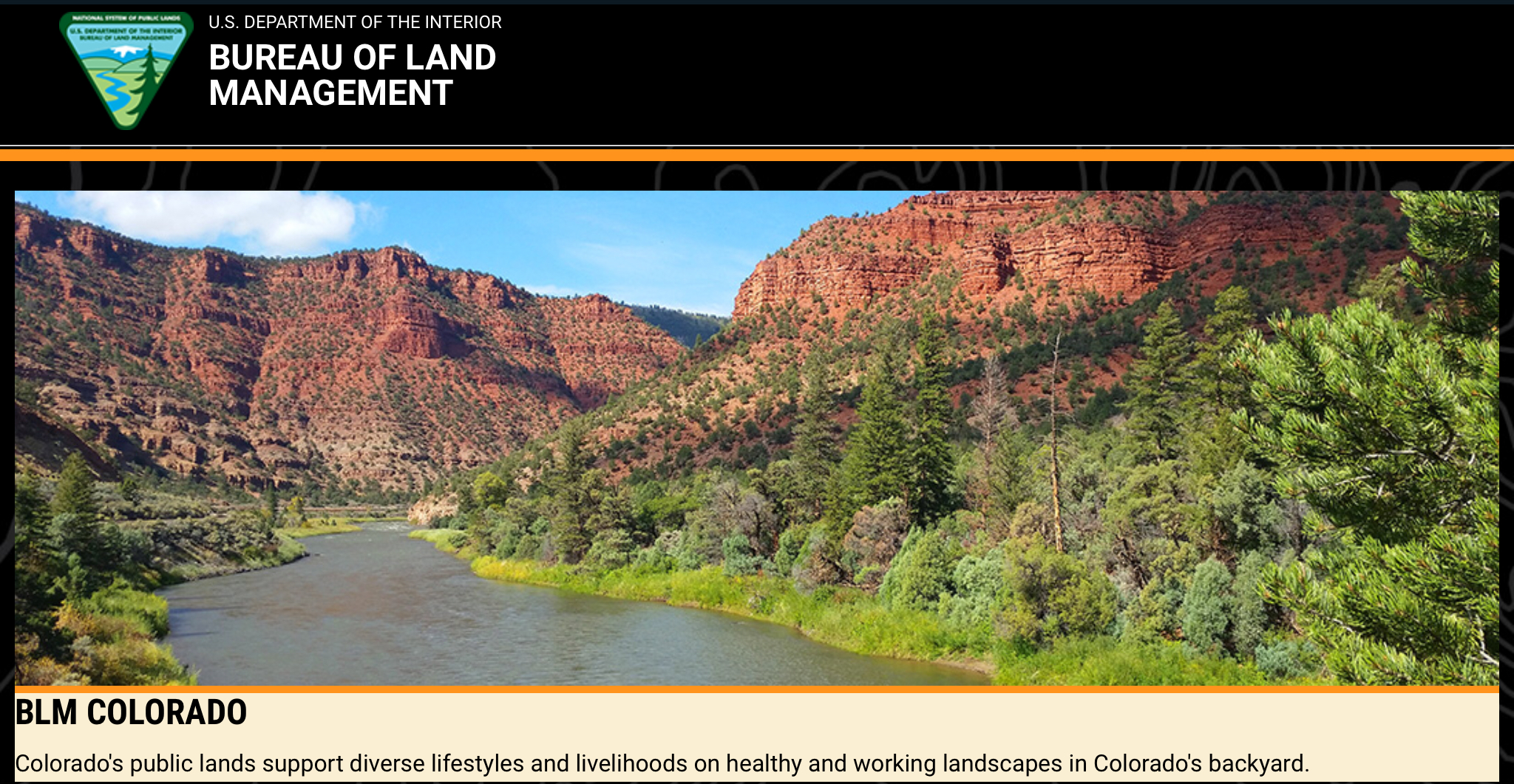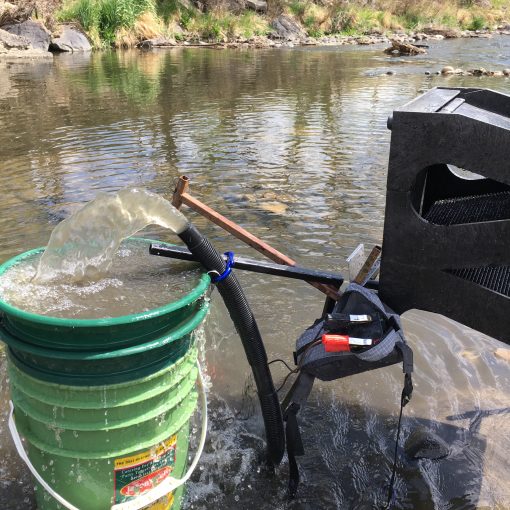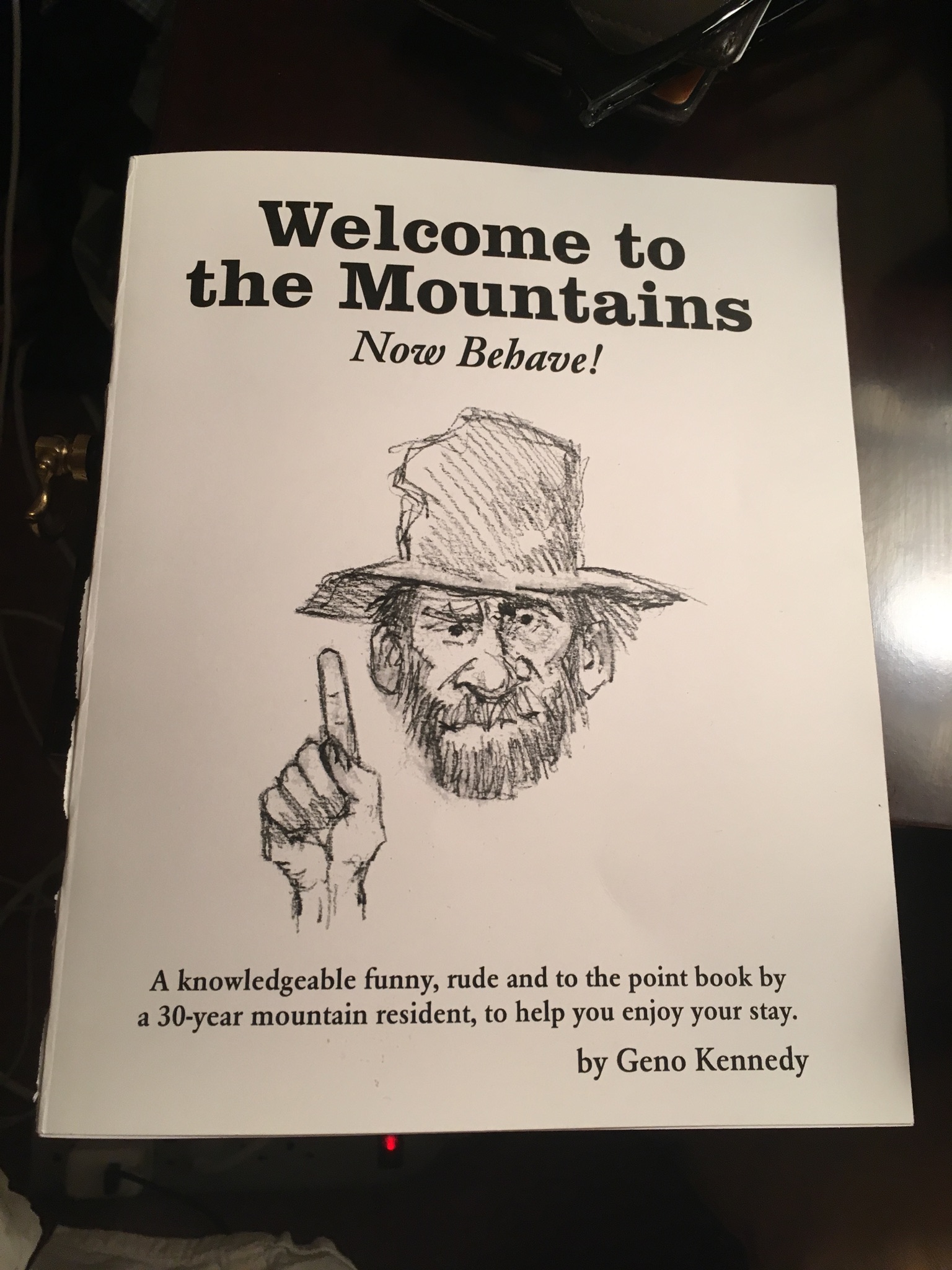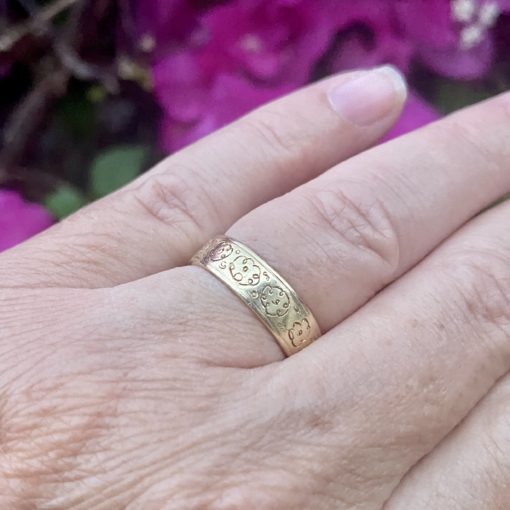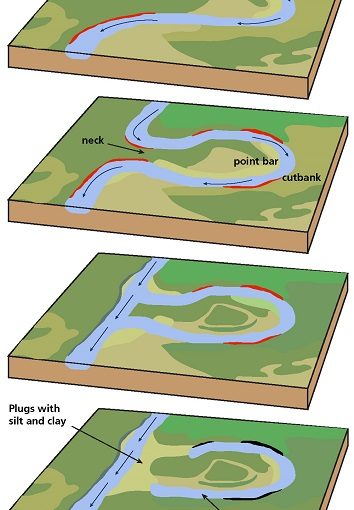A guest post by my friend Barry at www.mylandmatters.org
There seems to be a lot of misunderstanding about the BLM’s role in mining. I keep seeing prospectors looking to the BLM as if it’s an authority on mining or it’s the government agency that controls mining. The truth is a lot more interesting than those myths. To begin with the BLM had no role in mining claims until 1976. Even then the Mining Acts (laws) did not change. A little history about the BLM and mining claims might help understanding the BLM’s role in mining and how we got here.
The primary duty of the BLM is to maintain a current and historical timeline of public land status. They do this through the General Land Office which has been around since 1812 and was assigned along with the Federal Grazing Service in 1946 to form the BLM. The General Land Office just keeps land records. The Grazing Service just administers the public lands grazing allotments.
The BLM was not formed by an Act of Congress it was put together as an administrative agency by the Secretary of the Interior to assist in the duties of the Department of the Interior (DOI). It wasn’t until 1976 with the passage of the Federal Land Policy and Management Act (FLPMA) that Congress gave the BLM any power beyond those already given to the General Land Office and the Grazing Service. The BLM is relatively new in American history and to this day it remains a Bureau of the Department of the Interior. The DOI is an executive (Presidential) department created to carry out the laws as passed by Congress. No executive department can create laws – they can only enforce laws passed by Congress.
So why did Congress get the BLM involved in mining claims? It’s been a long process but the story is pretty simple despite all the years it took to come up with the current “solution”.
The BLM complained to their boss, the DOI, for many years that they just didn’t have enough resources to check the County Recorder every time they were asked by their boss to approve a right of way for a road or to facilitate the sale of sand and gravel etc. The County Recorder is where all the mining claim records are held. There were a lot of things the BLM was asked to do with the public lands that they couldn’t legally do if there was a mining claim where they wanted to do it. For years the BLM would barge ahead with a new road or stock tank or power line and get sued by the claim owner who didn’t have a clue what was happening until a bulldozer showed up and started destroying their mining works. The claim owners would sue, and of course win. The DOI would get a rash from Congress because they weren’t doing their job and it was costing a boatload of money to pay for the damages. The DOI would give the BLM a rash and the BLM would complain “we just didn’t have enough resources…” Congress would approve more money and the whole cycle would start again. This only got worse over time as the 1955 Surface Materials Act promised to bring in a lot more money as long as the BLM did their job. By the 1960’s things were really out of hand. The BLM was paying out more in court judgements than they were bringing in through grazing, leasing and sales. The court judgements and resulting bills were mounting. It wasn’t just the miners but the groups that had paid for a right of way or grazing improvements that were suing for their losses too.
Congress got tired of throwing more money at a problem that wasn’t getting fixed. By 1975 the proposal of pretty much closing the public lands to the people and putting them in the somewhat sometimes capable hands of the DOI and Forest Service became the current political fad. Congress was set to eliminate any possibility of the people getting any more public land and go to a system of leasing and sales. Welcome to the 70’s and the advent of the modern environmental movement.
There was just one problem with the plan. Mining. Mining made the country rich. The scheme whereby the the miner footed the entire bill of prospecting doing discovery work, developing the deposit, mining, refining, transporting and marketing the valuable mineral of the public lands has worked really well. Get the little guy to take the risk and everyone benefits from the jobs and wealth created. Mining was a significant driver of the economy and if mining rights and patents were removed from the public lands the miners had no incentive to continue looking for undiscovered deposits. Taking all the risks and fronting all the capital and labor on the gamble of discovering a paying deposit just wasn’t going to fly if the miner then had to pay for the minerals he had discovered.
So a new master plan was put into effect. The public lands in the future would no longer belong to the people as they had since 1803. All the opportunities for citizens to get a piece of the public land pie would be abolished and the Federal government would take over ownership of the public lands from the people. There would be no more patents or settlement on the public lands. This was sold as preserving the lands for future generations but the real effect was to lock future generations out of the possibility of benefiting from the public lands, as their ancestors had always done. The new policy was preservation at any cost. Taxes were needed to pay for preservation so the lands that had made us a wealthy nation would be a net expense into the future instead of a net benefit.
The people of this nation paid for every square inch of the public lands many years ago. That payment was in the form of huge quantities of mined gold {ed: which were paid to the foreign countries which used to own the land} – two million ounces alone for the Louisiana Purchase and Treaty of Guadeloupe Hidalgo and much more for Alaska, Gadsen etc. as well as millions of lifetimes of labor to improve homesteads and millions of men’s blood to take the land through war. The people themselves, my ancestors and possibly yours, paid for these public lands. This wasn’t done through taxation but though wars and sinking funds financed by land purchases. With one fell swoop in 1976 that was thrown out the door with this one statement of policy that is the opening line of the FLPMA.
Not yours anymore. It’s the government’s now unless the government wants to sell it. Just that simple. Or was it? There was still that sticky bit about mining being so valuable to the national interest. So Congress, in their wisdom, made one exception to taking the public lands from the people. The Mining Grant was to be preserved. Miners could still prospect, claim, mine and patent the public lands. This was the only freedom to take the public lands by claim of right and patent preserved out of nearly 50 other ways that had been valid just the day before. Only miners were allowed a little bit of the freedom the public had earned and enjoyed for nearly 200 years.
But… But… But the BLM said “we just don’t have enough resources…” and an exception was made to that freedom. The BLM got the right to be informed directly by the claim owner that there was a current claim on the public land. If they didn’t get the annual informational notice they were allowed to ignore the claim for planning purposes and the miner could not sue over damages. Instead of having to look up the public record at the County, like every other person and government employee, the BLM was now entitled to a personal signed informational notice as to the status of the mining claim every year. Then there was the fact that with the passage of the FLPMA the law now said the public lands had to be protected from undue and unnecessary damage. Part of that whole preservation for the future thing the enviros wanted. So the BLM and the Forest Service were given the duty to keep mining from damaging any more of the surface stuff than was necessary to accomplish mining of their located valuable mineral deposit. Congress might want to sell off those surface resources some day.
Two changes to the mining law – that’s all that happened with the FLPMA. Oh… and the BLM finally got recognized as an official agency of the Federal government after 30 years of being nothing but a letterhead. They were still a Bureau of the DOI but they actually got assigned a job by Congress that wasn’t already assigned to the General Land Office or the Grazing Service.
I’ve tried to stick to the facts in this little history. I left some stuff out and concentrated on some stuff more than other stuff but what I wrote is fact you can take to the bank. Now for my two cents of opinion (your bank will not deposit this check):
Miners are the last free citizens on the public lands. Miners have a right to the public lands that no other citizen has. That’s a big honor and in my mind a big responsibility to my way of thinking. The ability to make a claim of right to the public lands used to be common knowledge among the people of this nation. It’s more than likely the land your houses and businesses are on are former public lands located and patented by our ancestors. All other citizens have lost the right to work hard, improve the land and claim it for their own. Miners can still do that.
Miner’s can have their right to the Public Land taken away by Congress just as the rest of the citizens did. If modern miners are fooled into believing their claim of right is the same as every other use of the public lands they will end up acting as if their unique rights to the public lands are subject to the same rules as a lease or sale. Believing that the BLM is in charge of approving a mining claim is just the tip of this dangerous perception shift.
The more we misunderstand our unique place on the people’s land the more we encourage others to treat mining as something subject to popular whim. We see this already with public education in California and elsewhere teaching fake history like “hydraulic mining was banned” (never happened) or “miners ruined the land” (less than .02% of the public lands have ever been mined). If we can’t educate ourselves about our unique rights we might well be consigning a whole nation to ignorance of the critical and ongoing role of mining in this nation. That would be a great loss in my opinion.
I hope this little bit of history will help others to look into the actual extent of the freedom inherent in the mining grant. If we can learn this stuff there might be a chance of educating others and getting some of that lost freedom (and property) back into the people’s hands.
Educate Yourself and Prosper!
Heavy Pans, Barry aka Clay Diggins
—————————————————————-
Kevin here again…now that you’ve read this and probably learned something, I hope you’ll go over to www.mylandmatters.org to see all the amazing tools and information provided by Barry and the non-profit he was part of setting up. His website was a critical resource for me in writing the book (click here to learn about my guidebook to Colorado Gold Prospecting) and he’s a smart, helpful guy.
To read some actual law around all this, check out https://law.justia.com/cfr/title43/43-2.1.1.3.69.html%2343:2.1.1.3.69.5.140.6
Other rated articles on this website:
How to find and file your own mining claim (here).
How to buy a mining claim the smart way (here).
In addition to the public lands Barry describes, the BLM also manages reacquired land. This is property which has gone from public to private and then is repurchased by an act of congress. Reacquired lands are not open to claim. In several areas of Colorado, these reacquired lands are open to limited gold prospecting activity. This is nice for casual prospectors because you can go there without concern about committing mineral trespass on active mining claims. Unfortunately, the BLM recently rebuilt their website and failed to include the information on these spots. But, good news, I have your back! Here are my articles on all of these public access sites:
- https://findinggoldincolorado.com/pinon-bridge-blm-prospecting-area-prospecting-tips/
- https://findinggoldincolorado.com/norwood-bridge-recreational-placer-mining-area-prospecting-tips/
- https://findinggoldincolorado.com/rattlesnake-gulch/
- https://findinggoldincolorado.com/point-barr-prospecting-site/
- https://findinggoldincolorado.com/cache-creek-prospecting-site/
And here is the BLM Colorado website (here).
If you are looking at Master Title Plats and see “Acq COC 12345 WD to US” this means the land was reacquired by the US. You can look up the details of the land transfer here BLM Reporting Application (where 12345 above represents the transaction number on the MTP) by entering just the state (CO) and the transaction number.
Want to support this website?
Do your Amazon shopping, Gold Cube shopping, Sunny Mountain Prospecting shopping, and so on, go to my shopping page www.findinggoldincolorado.com/shop-here/ . It won’t cost you anything extra but it will give me some small referral fees which help keep the site going 🙂
